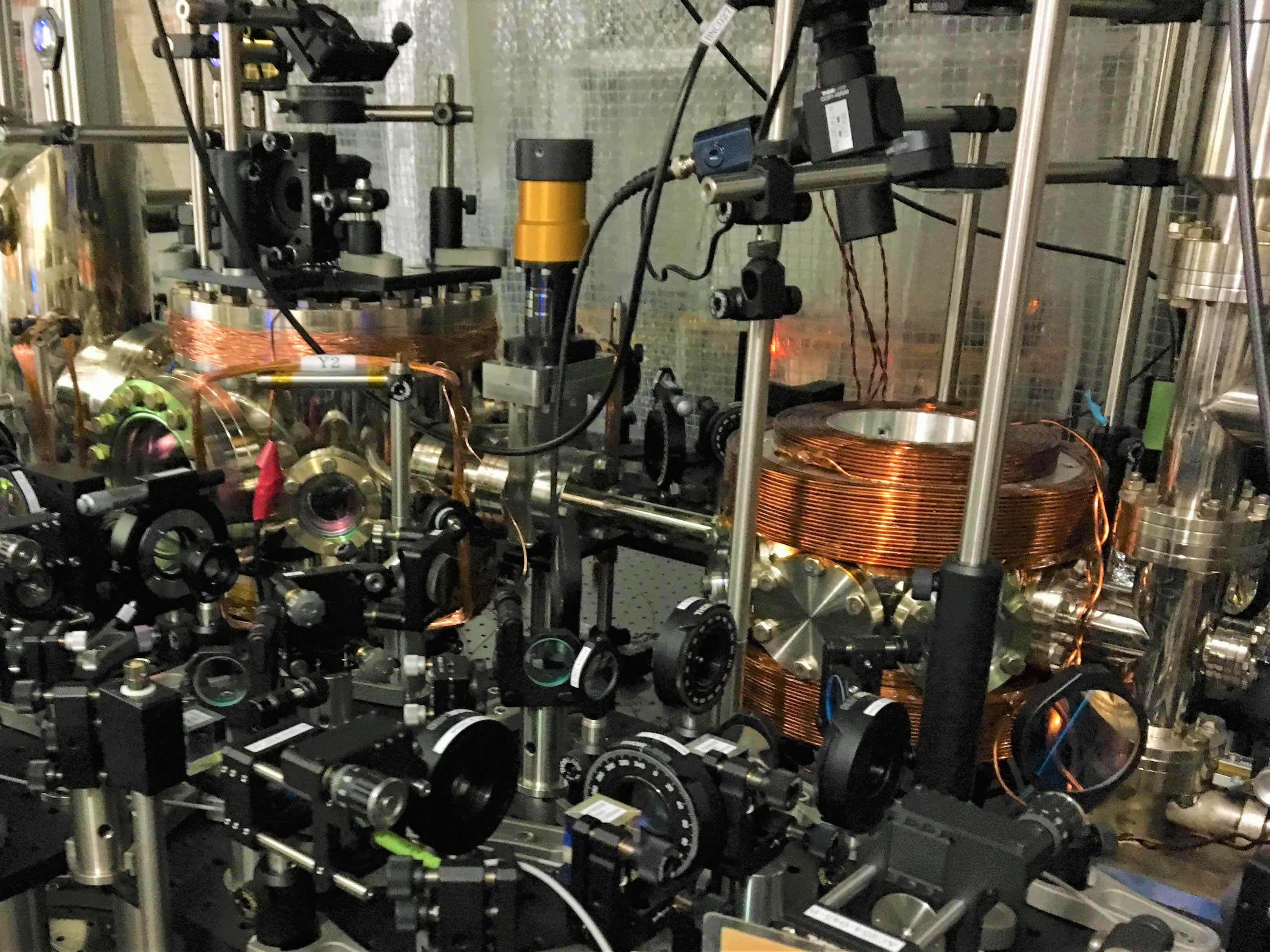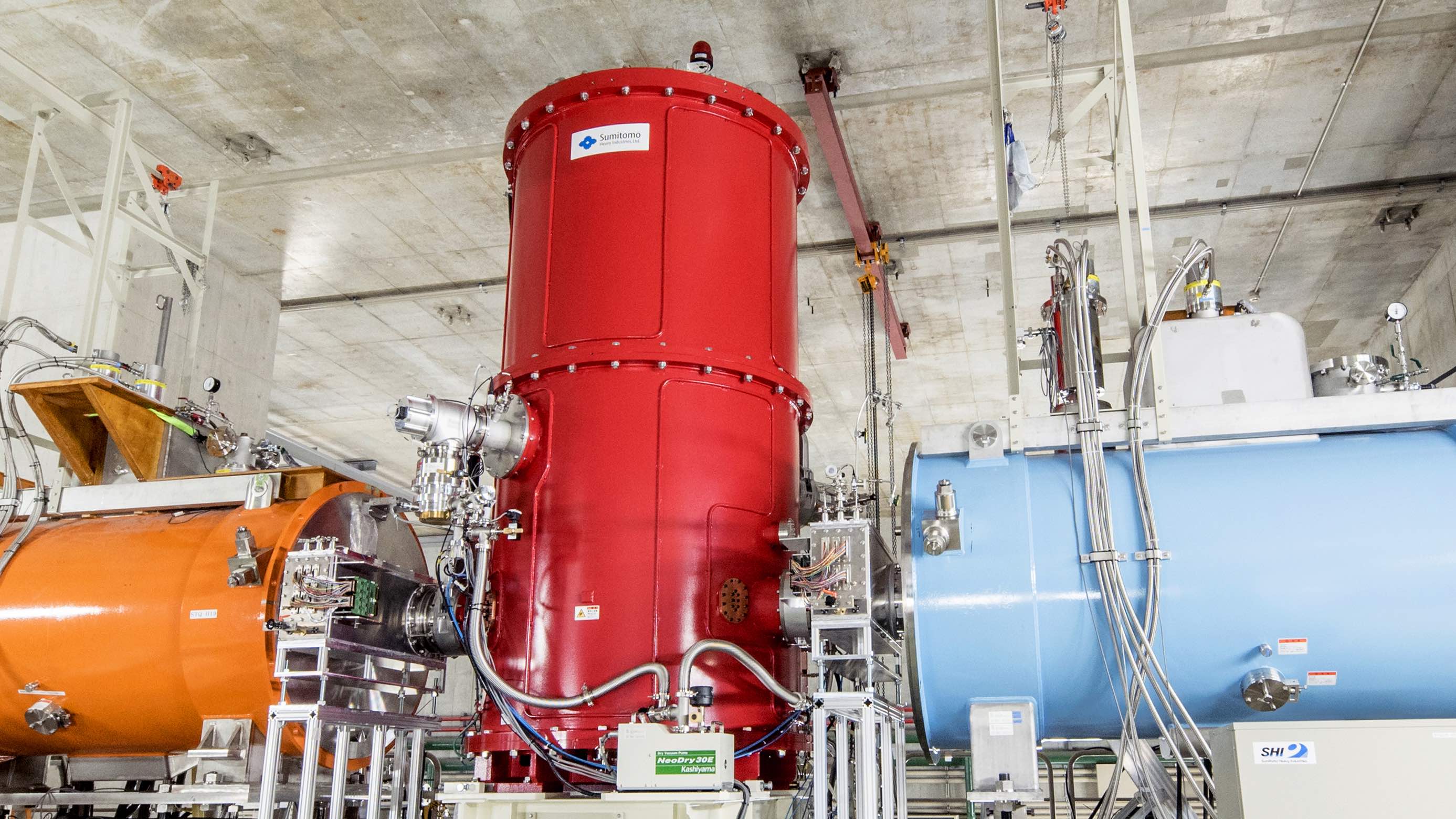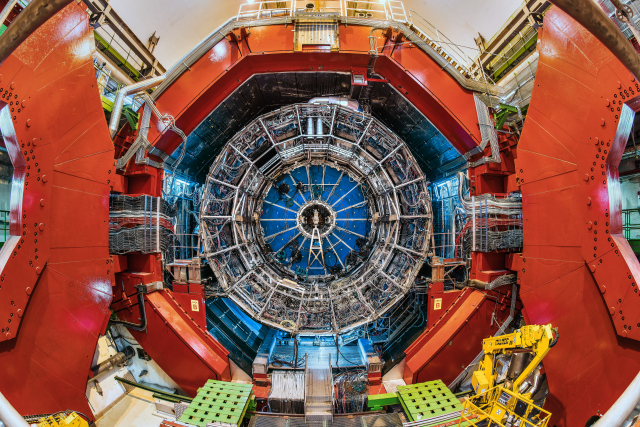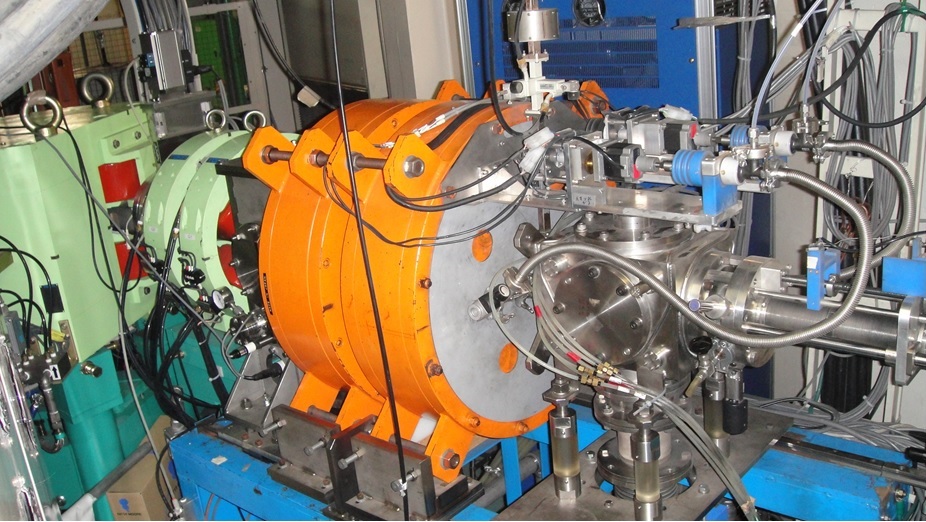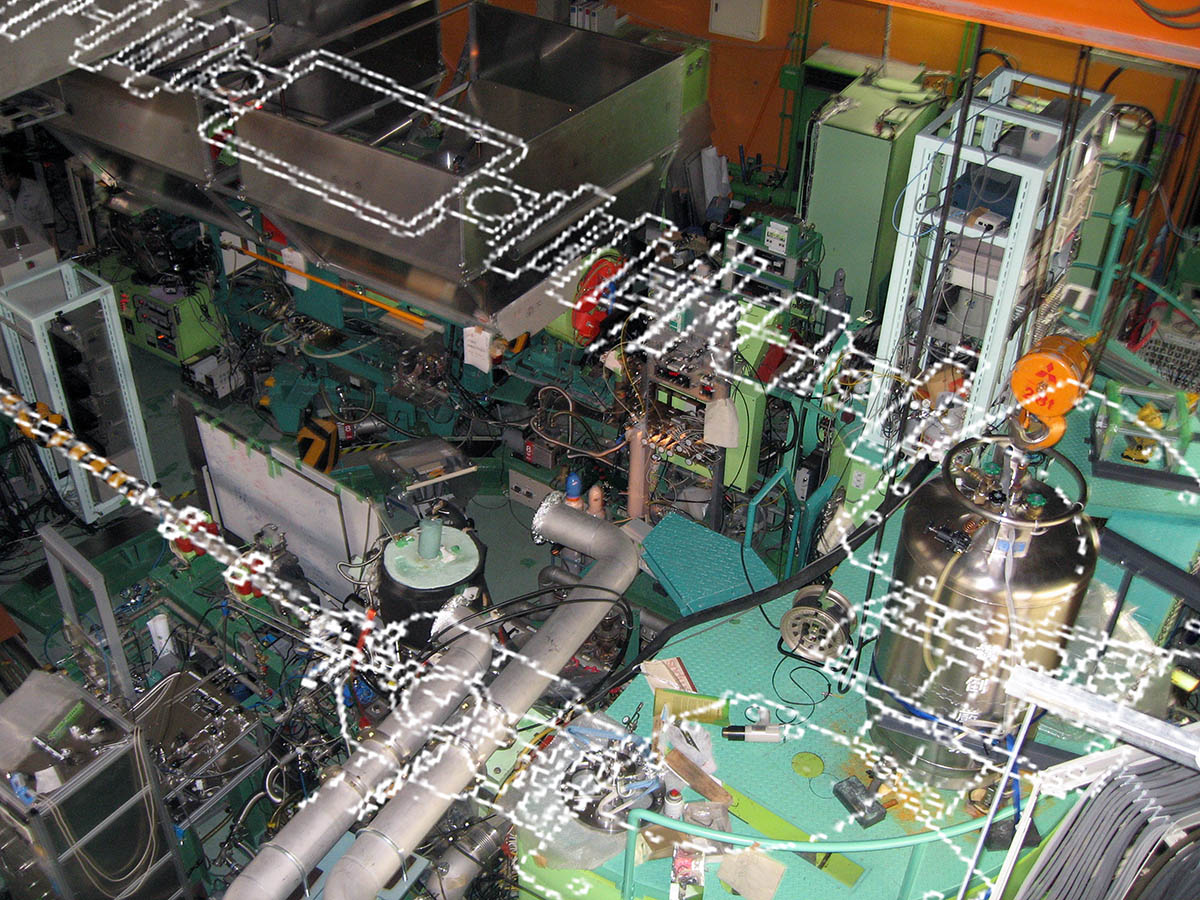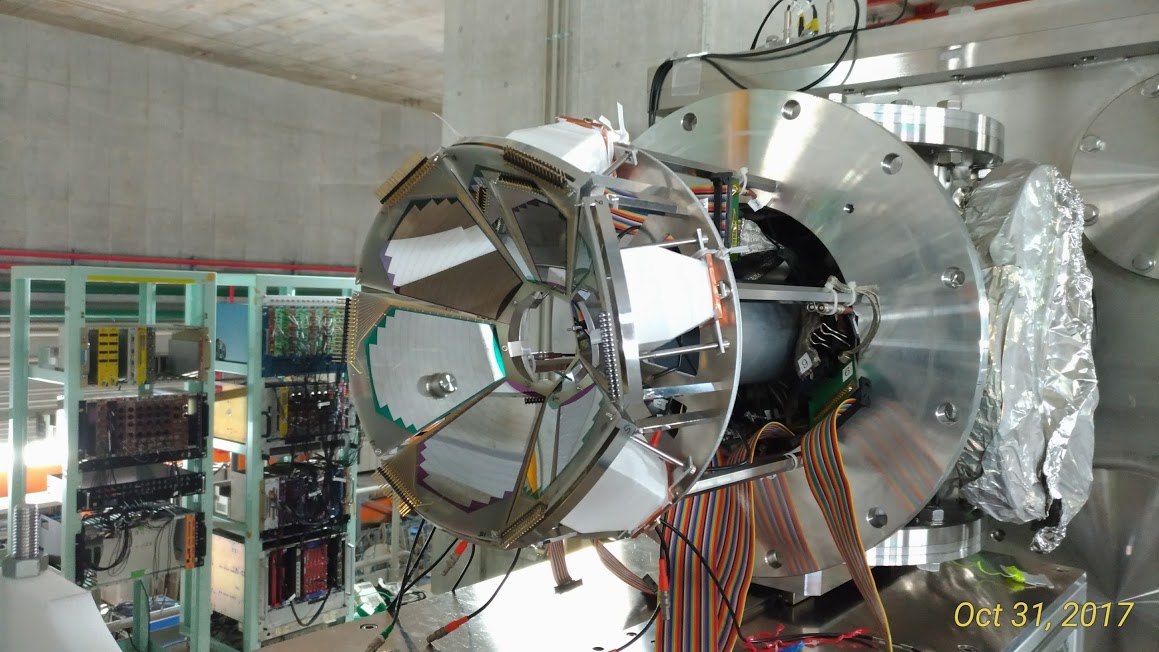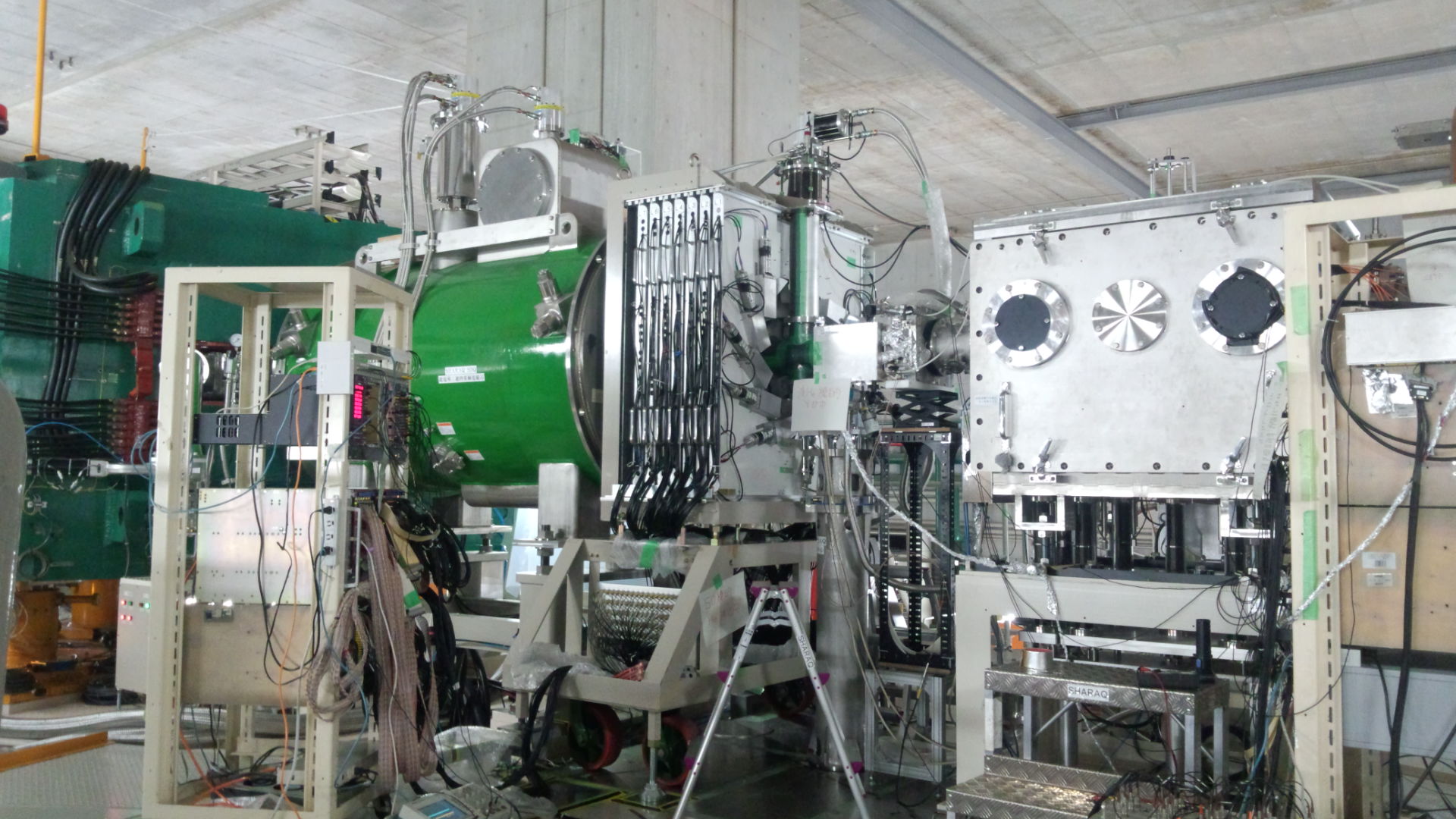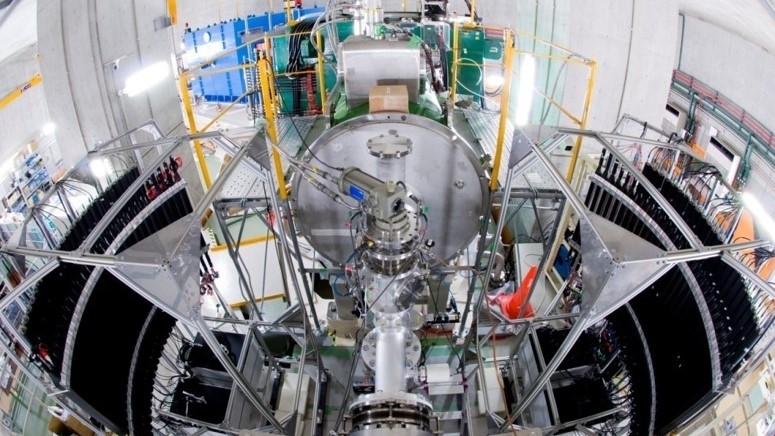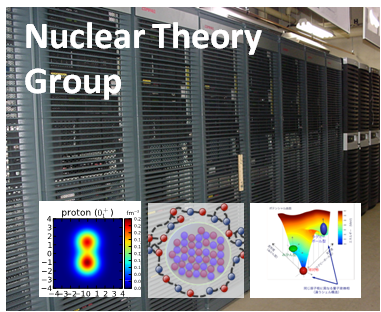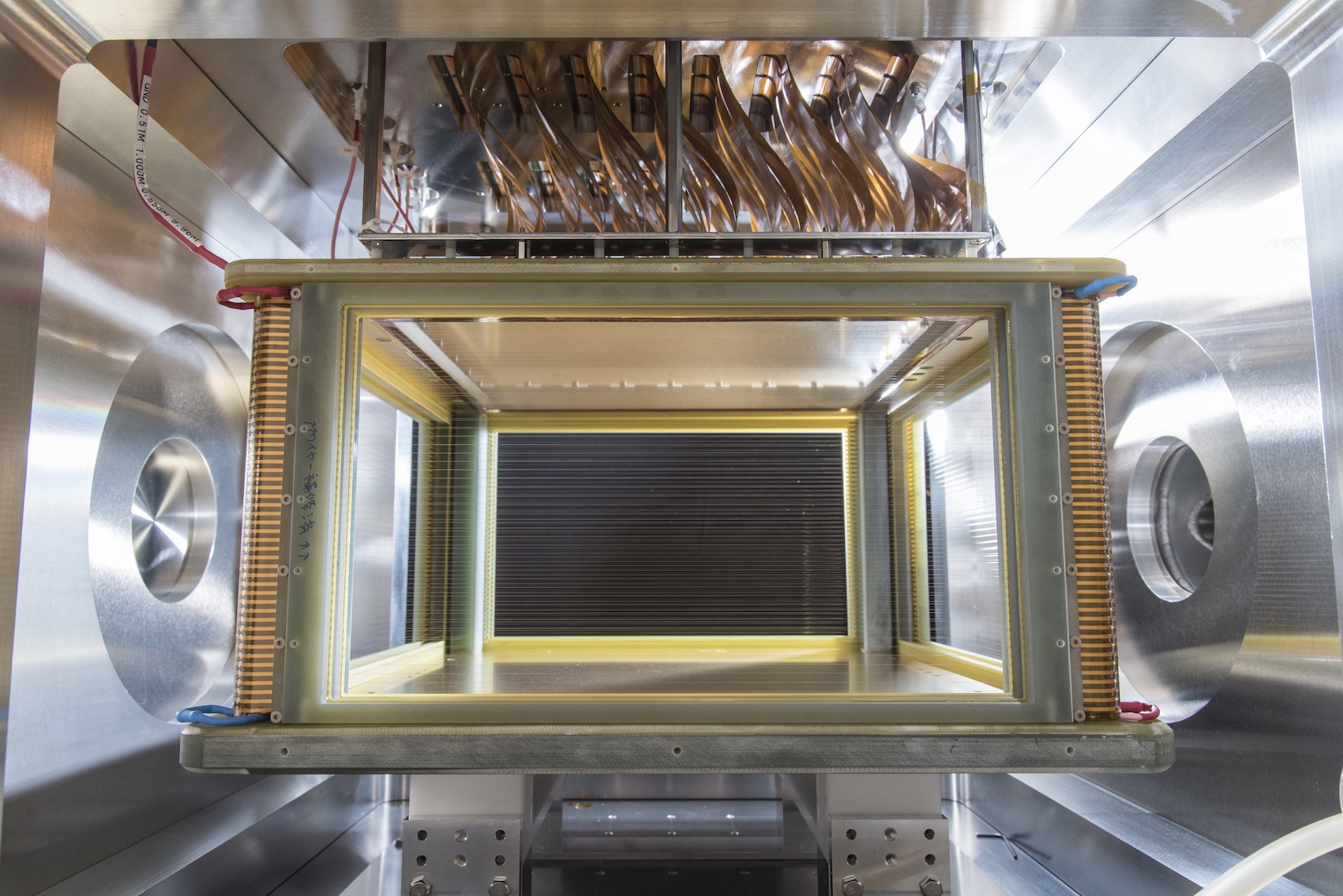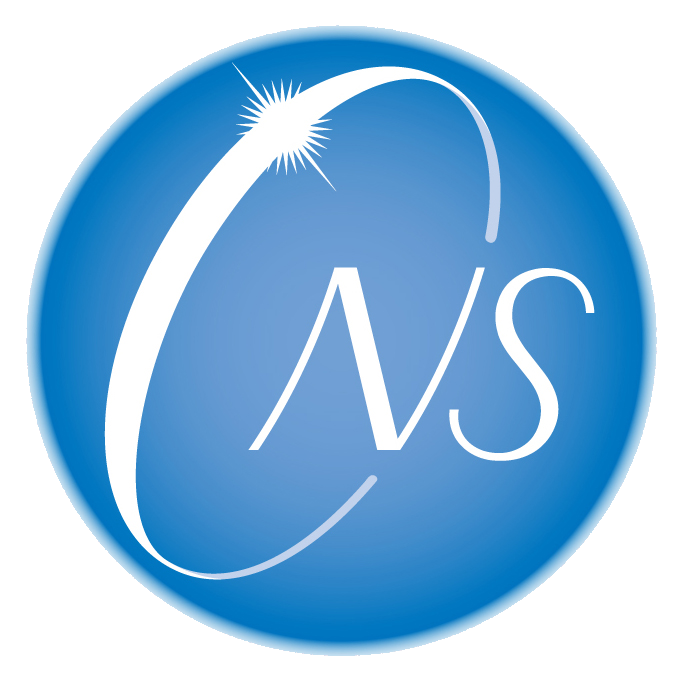We aim to understand the physics which governs two fermion systems of protons and neutrons in a nucleus. We are studying the properties of nuclei by changing the number of protons and/or neutrons from the stable nuclei.
Tetra neutron
When we measured double charge exchange reaction 4He(8He,4n)8Be with a special kinematic condition, residual four neutrons are generated with a recoil-less condition. When we measured the four neutrons by missing mass spectroscopy, we observed resonance-like structure around the threshold of four neutrons which are named as “tetra neutrons”. Convensional theories cannot explain the state, which suggests unknown many body correlation in neutron system. We carried out another measurement to obtain higher statistics to confirm the resonance. (Shimoura lab.)
Nuclear structure
In a nucleus, when proton number and neutron number changes, new phenomena emerge. The order of neucleus which can be found in the nature is generated by a spin-orbit interaction. But the order of the nucleus which has unblanced neutrons and proton numbers changes because of the tensor interaction, quadrupole correlation. Recently, exotic phenomena such as shape coexistence and quantum shape transition are observed. By measuring mass with high presision, in-beam gamma ray spectroscopy, proton resonance scttering and so on, we try to understand the physics which govern the nucleus. (Shimoura, Imai lab.)
Exotic shape
Various correlation between nucleons break symmetry in a nucleus, which leads to different shape of the nucleus. As examples of quadrupole correlation, super- and hyper-deformation, which are elonged-shape, are induced. More exotic shape like octupole, tetra-hedral, linear, and torus shape are predicted. We are seaching for such exotic phenomena and also studying how the broken symmetry is restored with a new collective motion.
(Shimoura, Imai, Yamaguchi lab.)
Collective motion
When a nucleus is poked by a nuclear reaction, rotational or vibrational motions can be induced. The phenomena are called as collactive motions, which reflect properties of the properties of nucleus such as stiffness. The collective motion is one of the main topics in nuclear physics. We are studying new phases of nucleus and new collective motions induced by radioactive ion beams. (Yako lab.)
